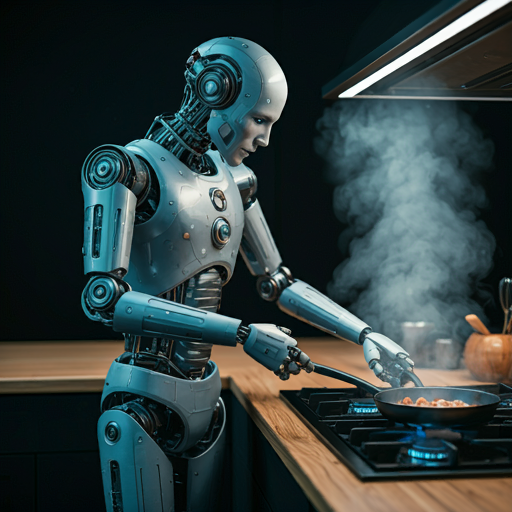Artificial intelligence (AI) is rapidly transforming industries, from healthcare to finance. While some fear a dystopian future where robots replace human workers, the art of cooking, steeped in sensory experience, cultural significance, and emotional connection, will likely remain a predominantly human endeavor. While AI might have a place in the kitchen, it won’t be replacing the chef anytime soon.
Cooking is a multi-sensory experience. A skilled cook relies on sight to judge the browning of onions, smell to determine the doneness of bread, touch to gauge the ripeness of a tomato, and taste to balance flavors. They adapt recipes in real-time based on these sensory inputs, adding a pinch of salt here or a splash of lemon juice there – decisions based on nuanced perception and years of experience.
This also extends to an inherent understanding of food safety, often gained through experience and formalized through a food safety course. Replicating this complex sensory feedback loop, coupled with learned safety practices, in a machine is an immense technological hurdle. AI can analyze data, but it can’t truly taste the subtle difference between freshly ground pepper and pre-ground spice, nor can it instinctively recognize the early signs of spoilage.
Beyond the sensory aspect, cooking is an act of creativity and improvisation. Think of the jazz musician riffing on a melody – a cook often deviates from the script, experimenting with new flavor combinations and adjusting recipes based on intuition and available ingredients. Grandma’s secret sauce isn’t just a list of ingredients; it’s a lifetime of accumulated knowledge and instinctive adjustments, combined with an ingrained understanding of food safety practices, passed down through generations. AI, on the other hand, operates based on pre-programmed algorithms. While it can generate recipes from existing data, it lacks the spontaneous creativity and adaptive problem-solving crucial to truly innovative cooking, especially when navigating unexpected situations that demand quick, hygiene-conscious decisions. While AI might be programmed with the information from a food safety course, it lacks the practical experience to apply it effectively in a dynamic kitchen environment.
Furthermore, cooking is deeply interwoven with culture and emotion. Food is more than sustenance; it’s a powerful symbol of cultural identity, family tradition, and personal memory. The aroma of freshly baked bread can evoke childhood memories, while a shared meal can strengthen social bonds. This shared experience also relies on the trust built through demonstrable food hygiene. AI, lacking the capacity for emotional experience and cultural understanding, can’t replicate this profound human connection to food. It can generate a nutritionally balanced meal plan, but it can’t recreate the comforting warmth of a home-cooked meal prepared with care and an understanding of safe food handling practices.
AI does have a role to play in the food industry. We see it in automated food preparation in factories, personalized nutrition apps, and even recipe generators. These applications, however, still heavily rely on human oversight, especially when it comes to ensuring compliance with regulations learned in a food hygiene course. These technologies can free up human chefs to focus on the creative and emotional aspects of cooking, enhancing their abilities rather than replacing them. So, rest assured, the joy of cooking, the connection it fosters, and the unique flavors it creates will remain firmly in human hands. Your grandma’s secret recipe, backed by generations of practical food safety knowledge, is safe, for now at least, from the robots.

